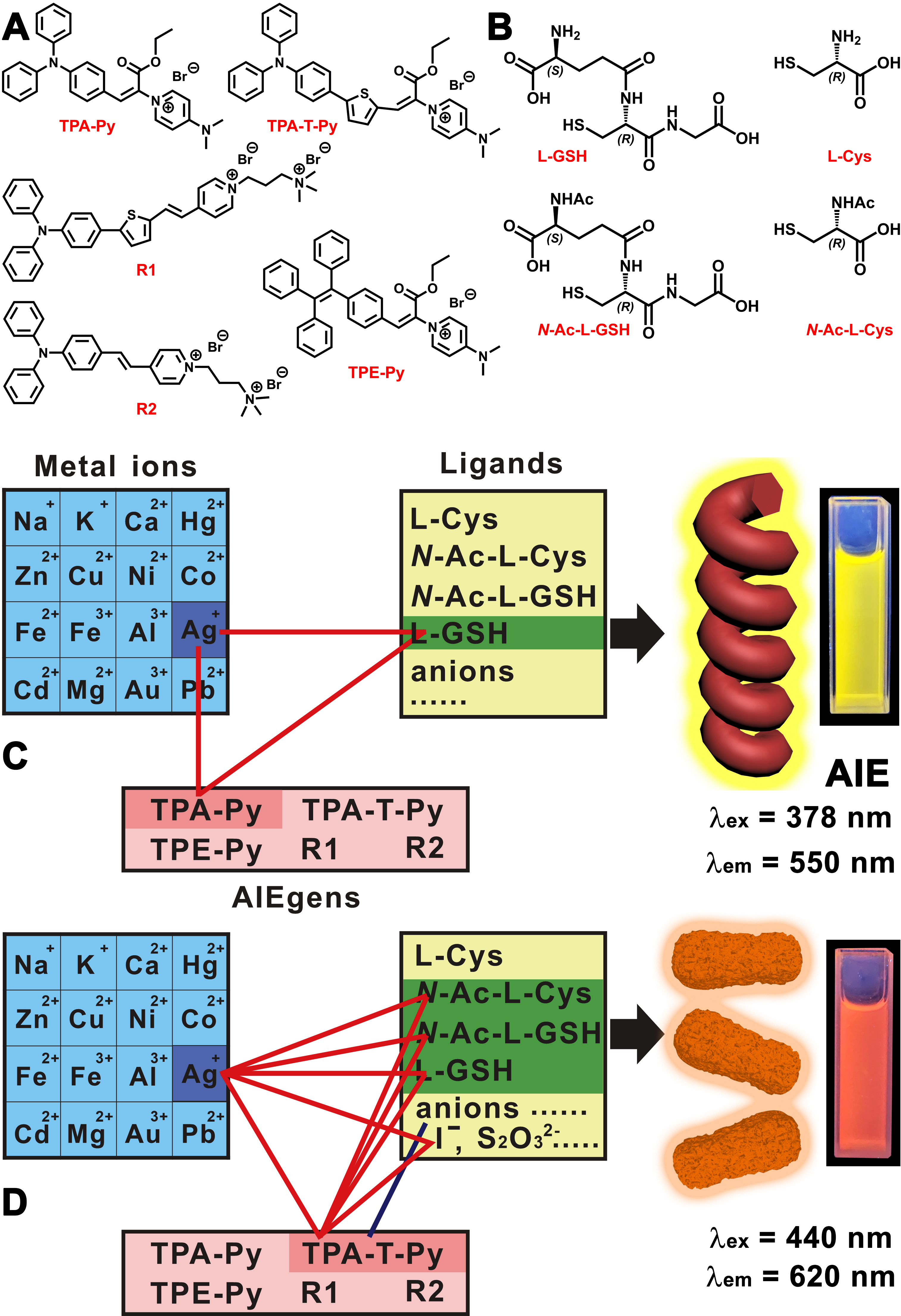数十亿年来,大自然为特定的生物功能选择、生产和进化了许多分子结构图案。在这个过程中,分子自组装起着至关重要的作用。受这些精致组件的启发,科学家们致力于开发由多种结构图案组装而成的各种复杂的复合物。到目前为止,大多数例子都集中在单分子自组装或两个分子之间的共组装,由于复杂性显着增加和可控性降低,很少有工作报告三个构建块之间的共组装。在这里,我们报告了 L-谷胱甘肽 (L-GSH)、AgNO3 和聚集诱导发光体 (AIEgen) 之间的新型三组分共组装,即三苯胺-吡啶鎓(缩写为 TPA-Py)。 TPA-Py、L-GSH 和 Ag+ 共同组装成许多具有左旋螺旋的长而有序的纳米线,这些纳米线表现出肉眼可以观察到的显着 AIE 特性。这种效应仅在该系统中检测到,TPA-Py 被其他 AIEgens 取代,L-GSH 被其他半胱氨酸衍生物或阴离子取代,Ag+ 被其他金属离子取代,不能产生独特的 AIE 效应,这赋予了该系统高特异性和可控性。这项工作为生物分子识别系统的设计提供了新的见解,并揭示了三元共组装可以成为构建复杂纳米生物材料的简便途径。
相关成果发表在Wiley出版社旗下的新锐期刊《Aggregate》上,第一作者是黄小欢博士。以上研究工作得到国家自然科学基金项目、我所创新特区组启动基金、兴辽英才计划等项目的支持。

Unique three-component co-assembly among AIEgen, L-GSH, and Ag+ for the formation of helical nanowires
Xiaohuan Huang, Junrong Li, Hong Tang and Guangyan Qing*
Aggregate, 2022, DOI: 10.1002/agt2.272.
Nature has selected, produced, and evolved numerous molecular architectural motifs over billions of years for particular bio-functions. During this process, molecular self-assembly plays a critically important role. Inspired by these delicate assemblies, scientists devote themselves to developing various sophisticated complexes assembled by diverse and numerous structural motifs. By far, most of the examples focus on single-molecule self-assembly or co-assembly between two molecules, seldom works report the co-assembly among three building blocks due to the substantially increased complexity and decreased controllability. Here we report a novel three-component co-assembly among L-glutathione (L-GSH), AgNO3, and an aggregation-induced emission luminogen (AIEgen), namely triphenylamine–pyridinium (abbreviated to TPA-Py). TPA-Py, L-GSH, and Ag+ co-assemble into numerous long and ordered nanowires with left-handed helices, which show remarkable AIE properties that can be observed by naked eyes. This effect is only detected in this system, the replacement of TPA-Py with other AIEgens, L-GSH with other cysteine derivatives or anions, Ag+ with other metal ions, could not lead to the unique AIE effect, which endows this system with high specificity and controllability. This work provides new insight into the design of biomolecule recognition systems and discloses that ternary co-assembly could become a facile route to build sophisticated nanobiomaterials.